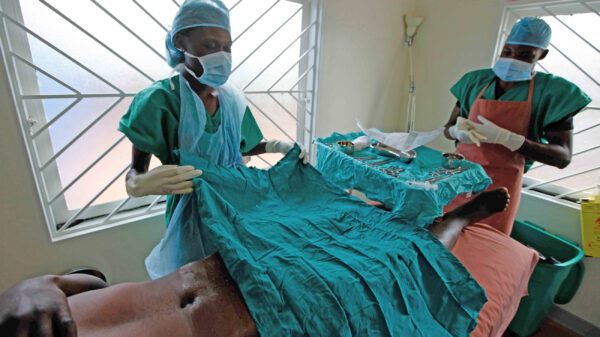5 Things You May or May Not Know About the Adult Circumcision Surgery

Talking about adult male circumcision, many health care professionals prefer to remain on the fence regarding parental recommendations. The fiction and facts surrounding this practice of the removal of the foreskin from the head of the penis is one that comes with uncertainty due to a number of conflicting religious and traditional researchers. Right from its impact on the sexual function of the possible health complications, it is hard for most parents to make a final decision on whether or not they should circumcise their infant.
According to research and facts, the adult circumcision surgery is a safe surgical procedure however, aftercare is necessary. The only two major problems or a risk of this typical surgery, where the skin cuts off is infection and bleeding. The good news is that with proper care and the right periodic inspection, this is not an issue.
The major benefits (two) of this surgery are the lower chance of UTI’s (Urinary Tract Infections) and ease of cleanliness. Even though some benefits exist, they are minimal and usually, they are not factors that prompt a child circumcision.
In order to clear a few things up, let us clear some of the realities and myths that surround the adult circumcision surgery by disusing a few things you may or not know about the surgical procedure.
1. Lowers the Risk of Prostate Cancer
Researchers and facts based on experts such as those at Circumcision Center show that circumcision in men is on the top of STI protection, and it protects a man against the risks of prostate cancer development in the future. The research surrounding the lower risks of developing prostate cancer among Jewish and Muslim men in the West was one based on interviews with 3,208 men. Out of this number, 1,590 were those with a prostate cancer diagnosis. When compared to men who did not go through the circumcision surgery, those uncircumcised as infants were about 14% less likely to develop this cancer. Astonishingly, circumcised men later in their life were less likely (45% less) to develop the prostate cancer when compared to the uncircumcised men.
2. Lowers Sexually Transmitted Diseases
Circumcision reduces the risks of contracting the disease, such as HIV (Human Immunodeficiency Virus), in adult men by about 60%. However, it is not easy to identify the exact cause. Recently, a study conducted by Translational Genomics Research Institute exposed that the removal of the foreskin from the penis can change the bacterial community “microbiome,” leading to better protection against HIV infection. Their study was one based on 156 men in countries like Uganda, who went through circumcision as adults and reported that after a year of the surgery, a number of bacteria dropped by about 33.3%.
3. The Procedure Comes With Some Pain
Although circumcision is a procedure that people say is easy and quick, this does not mean that it is pain-free. The procedure takes place under medications such as anesthesia to lower the pain threshold, but when the effects fade, you will experience some pain. During the surgery, personal preference is a deciding factor. The procedure takes about five minutes and your doctor may give you the choice to choose a local or general anesthesia. Once the surgery is over, it can take one to four weeks for complete healing. During this time, it is advisable that you consult your physician for the care tips to follow.
4. Risks Can Increase as You Age, Personal Choice is a Factor
Circumcision comes with several risks such as infection, bleeding, excessive removal of skin, scarring, and difficulty when urinating, which are all common with age. This is a reason why most physicians urge parents to choose the procedure for their children at an early age. Some common risks of circumcision in later ages among men include damage to the urethra or too much removal of the foreskin.
5. Some Mental Health Implications
The investigation surrounding circumcision shows that some men who go through circumcision are prone to having some mental implications, such as aesthetic worries. Some men tend to feel conscious about the appearance of their penis, especially regarding how it appears to their female partners. However, for some, it helps to boost their self-esteem, as they may be conscious about their excessive foreskin.
Along with these, a condition that goes with the name phimosis is one that occurs when the foreskin of the penis remains, as it is, uncircumcised. This causes it not to retract from the head of the penis. Often, this can lead to infections, pain when erecting and urination. Paraphimosis is one that occurs when the foreskin returns to its normal position after it retracts. This is a painful condition, causes swelling and impaired blood flow.
Adult circumcision surgery helps to keep men away from many health-related problems. Before you opt for the surgery, it is advisable that you consult your physician, clear all your doubts and keep up with all the facts and myths. Take your time to evaluate your options and choose the best specialist in your area based on the years of experience they have in treating patients.





